The contest, organized by the Department of Culture, Sports and Tourism on the occasion of the 50th anniversary of the Liberation of the South and National Reunification, attracted many skilled artisans in the fields of weaving, knitting and culinary processing.
In the traditional craft category, each artisan brought two products to the competition: one complete for display and one unfinished to demonstrate craft techniques. The products were scored based on their practicality, tradition, aesthetics and creativity - criteria that reflect the ability to transform cultural values into tourism products that can be used, displayed or given as gifts.
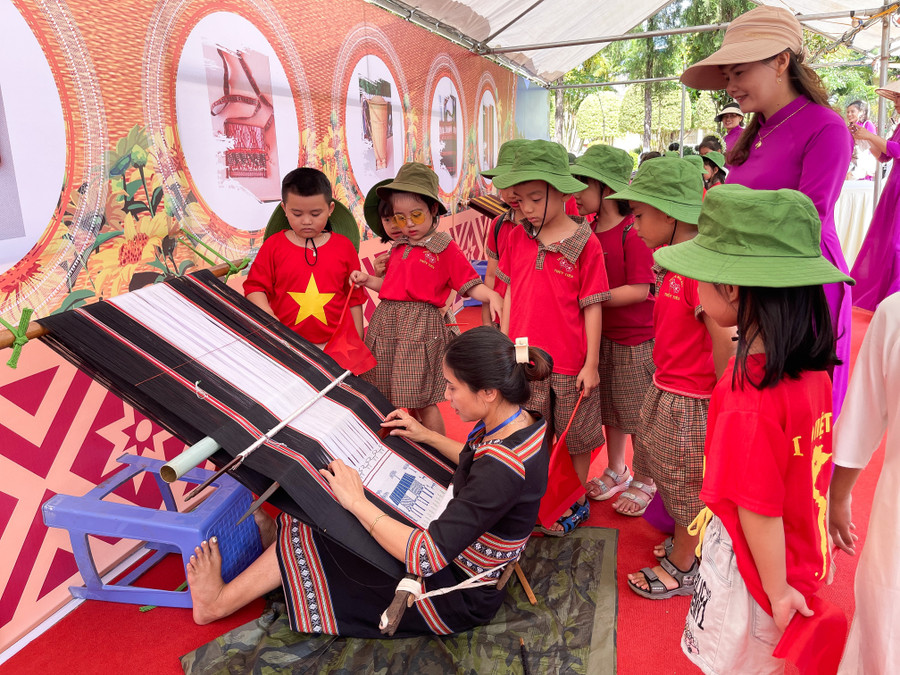
Gift from the village
The brocade weaving competition is a miniature stage of Central Highlands life. From scarves, shoulder bags to tablecloths, each product is a cultural piece bearing the personal mark of the artisan.
Artisan Ro Cham En (Bang village, Ia Nhin commune, Chu Pah district) spent more than half a month weaving a work with content towards the national reunification day (April 30). Her scarf prominently features the words "Commemorating the 50th anniversary of the liberation of the South and national reunification day April 30, 1975 - April 30, 2025". Along with that, the image of soldiers and workers appears in each colored thread like an epic poem woven with her pride for the day of peace .
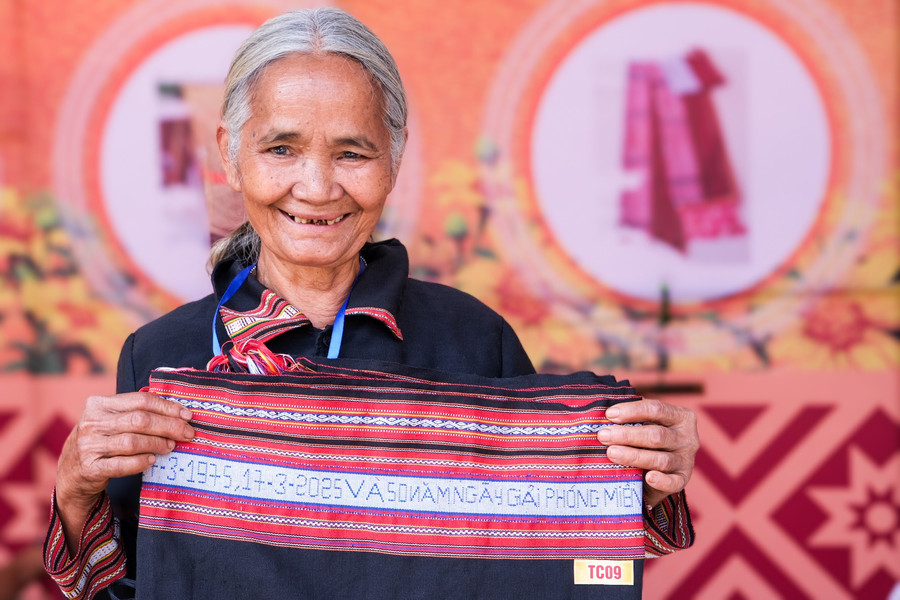
"I weaved for more than half a month without stopping, because this brocade carries the pride of a Central Highlander on the day the country is filled with joy," she said.
In another corner, young artist Luăn (Dak Đoa town, Dak Đoa district) chose a gentler way of telling a story through a tablecloth called “Bahnar Village”. Images of stilt houses, rice pounders, poles and familiar animals in life appear simple yet vivid. “When spread on the table, the whole village space appears like a painting” - she shared about the idea of the work.
For Ms. Luan, brocade is not only beautiful but also has to tell the story of the village, bringing a deep cultural experience to visitors. “The artisans participating in the competition are all very skilled. However, to create products for tourism, we need ideas so that the products are more attractive and can be applied to many aspects of life, not just to make clothes or use for decoration,” she said. With this idea, the young female artisan won first prize in the weaving skills competition.
In the weaving competition, the richness of techniques and designs reflects the unlimited creativity of the artisans. From baskets to innovative items such as handbags, vases… all exude rustic beauty and high applicability.
Artisan Dinh Van Ring (Kbang district) won first prize with a traditional woven basket, the basket body has meticulous patterns, the weaving technique is tight, the bamboo slats are thin and evenly shaved - the crystallization of a lifetime devoted to the profession. Meritorious artist Dinh Bi (Kbang district) created elegant flower vases from bamboo slats, both preserving the spirit of the old profession and meeting modern aesthetic needs.
Another impressive product is the backpack made by artisan Hyoi (Dak Doa district). He said: “When I was young, my father wove me a backpack to herd cows, inside which I could put rice, a raincoat and some other items. The backpack hugged my back so I could easily move with the herd of cows. It is also an item associated with childhood memories.
According to Mr. Hyoi, each type of basket has its own purpose: a loose basket for fetching water, a closed basket for carrying rice in the fields, a small basket for festivals or a backpack for going into the forest... With the experience and weaving skills accumulated over the years, artisan Hyoi can create many diverse designs to serve life. "To create a product as a gift for tourists from a traditional craft, I have added patterns so that the product is both usable and beautiful," he said.
From village kitchen to tourist banquet table
Cuisine is the soul of living culture, and in this competition, each meal is a story about the life, customs, soil and history of a community.
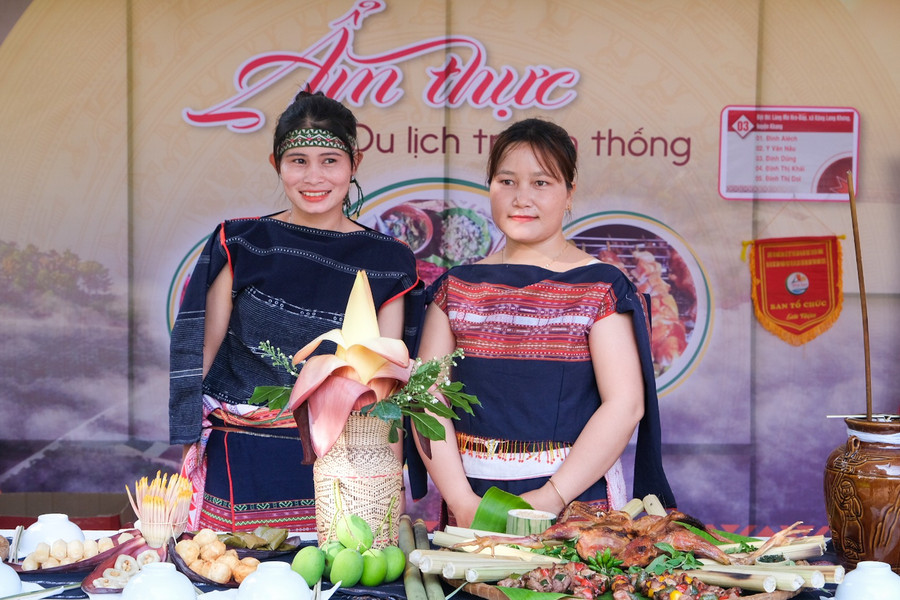
The competition required presenting a traditional meal including dishes such as bamboo rice, grilled chicken, grilled fish, grilled meat, stir-fried noodles with bitter melon, stir-fried or boiled vegetables, soup, rice wine and local fruits.
The Ia Nhin Commune Team (Chu Pah District) introduced a steamed dish made from tadpoles caught in streams, steamed with chili, salt and betel leaves - a traditional dish that reflects the ingenuity in utilizing natural products. They also brought bamboo shoots - a dish made from bamboo shoots, rice flour, perilla leaves, peanuts (or replaced with macadamia nuts) and crushed crab left overnight. This is an indispensable dish in family ceremonies or community festivals, fully converging the colors, aromas, flavors and culinary customs of the Jrai people in the West of the province.
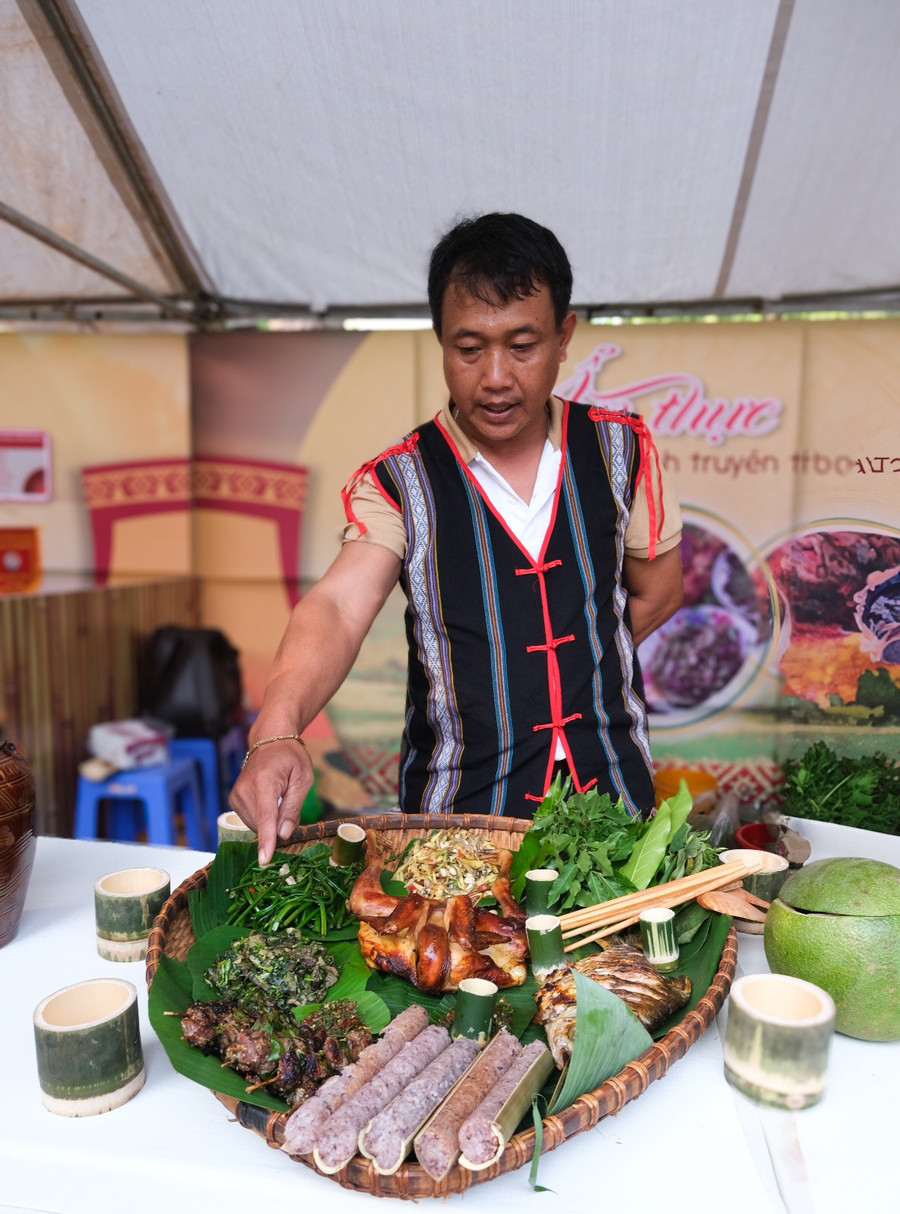
The Tu An commune team (An Khe town) attracted attention with the dish of stir-fried bamboo shoots and bamboo shoots with mountain rats, or grilled stream fish wrapped in three-striped crab fruit. The Ia Piar commune team (Phu Thien district) introduced the dish of yellow ant eggplant - a strange dish that also has the effect of curing hangovers, and the dish of "nhâm dao" which is almost lost, made entirely from plants, without salt or industrial spices. "All the sweet and salty flavors are extracted from the tree trunk and it takes weeks of processing to get the right taste of nhâm dao. Therefore, this dish only appears in big festivals of the community" - Ms. Nay H'Loan said.
Meanwhile, the team from the border commune of Ia O (Ia Grai district) brought a refreshing soup of ươi fruit, while Glar commune (Dak Doa district) introduced grilled pork leg pounded with galangal - and many dishes pounded with very unique spices. The chefs from the Mo Hra-Dap community tourism village, or Kgiang village (Kbang district) impressed with their traditional Bahnar dishes, rustic and simple but with eye-catching presentation, modern culinary thinking, aiming to develop into tourism products.
Krong Pa district participated with 2 teams with different styles, but the dishes all have the identity of the hot land with the harmony of sour, salty, sweet, bitter, and astringent spices. Especially the sun-dried beef dish combined with yellow ant salt has created a brand for the cuisine of the "fire pan" region.
Ms. Nguyen Quyen Anh Chau (Phu Can commune, Krong Pa district) representing the team that won first prize in the culinary competition shared: “Cuisine is like beauty - it is difficult to define, it depends on taste and perception. But the more I learn about Gia Lai cuisine, the more surprised I am by its richness, uniqueness, and something very special. Through each competition, I learn more dishes to add to the restaurant menu and to my family meals.
Mr. Nguyen Tan Thanh - Chairman of the Tourism Association, a member of the jury, commented: “The dishes are not only attractive in taste but also beautifully presented, creatively demonstrating a deep understanding of culinary traditions as well as the skills of local chefs. In particular, some teams also had lively presentations about the origin and cultural significance of the dishes. The competition also contributes to honoring and promoting traditional culinary culture to the community and tourists.”

According to Ms. Le Thi Thu Huong - Deputy Director of the Department of Culture, Sports and Tourism: The contest is organized to concretize the task of developing rural tourism associated with building new rural areas. This is the second year the contest has been organized, continuing to affirm the important role of cultural values in tourism development, both encouraging the community to preserve traditional crafts and creating sustainable livelihoods.
At the end of the competition, the Organizing Committee awarded 11 main prizes for 3 categories. Artisan Luan (Dak Doa town, Dak Doa district) won first prize in brocade weaving. Artisan Dinh Van Ring (Kong Long Khong commune, Kbang district) won first prize in weaving.
Culinary competition: first prize went to Phu Can 2 commune (Krong Pa district), second prize went to Glar commune (Dak Doa district), third prize went to Ia Nhin commune (Chu Pah district). The remaining 7 teams were encouraged by Gia Lai Tourism Association and Ksor Hnao Artisan restaurant, each team received 1 million VND.
:
Source: https://baogialai.com.vn/van-hoa-chap-canh-cho-du-lich-gia-lai-post321207.html


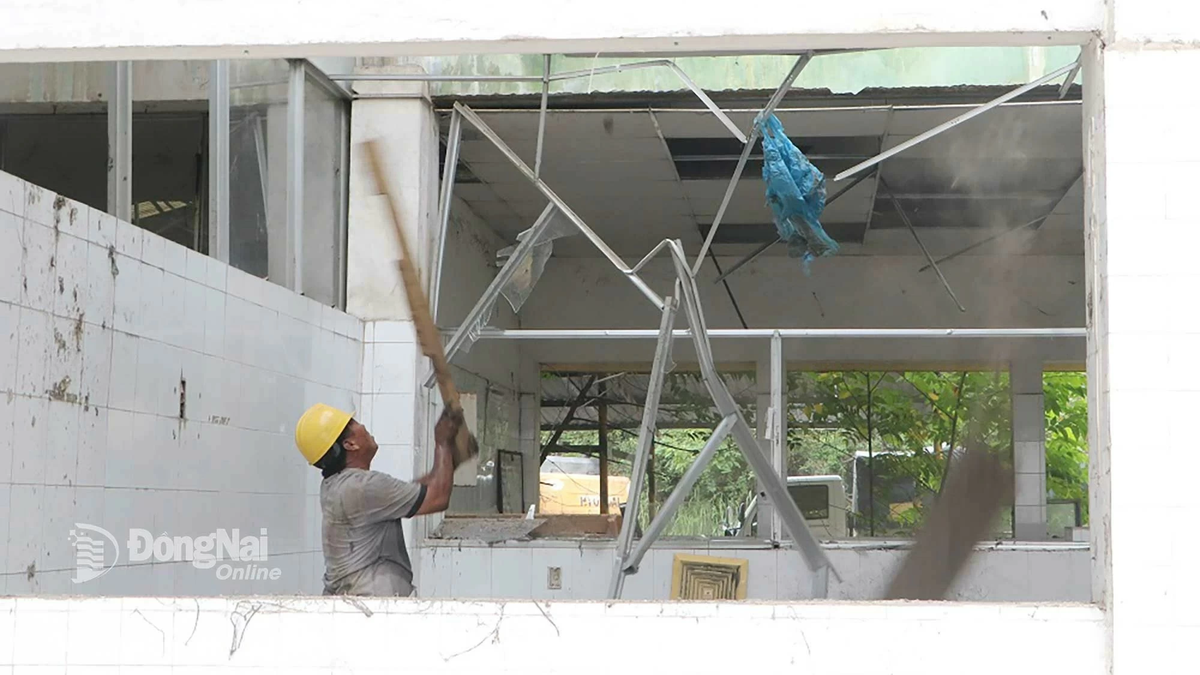

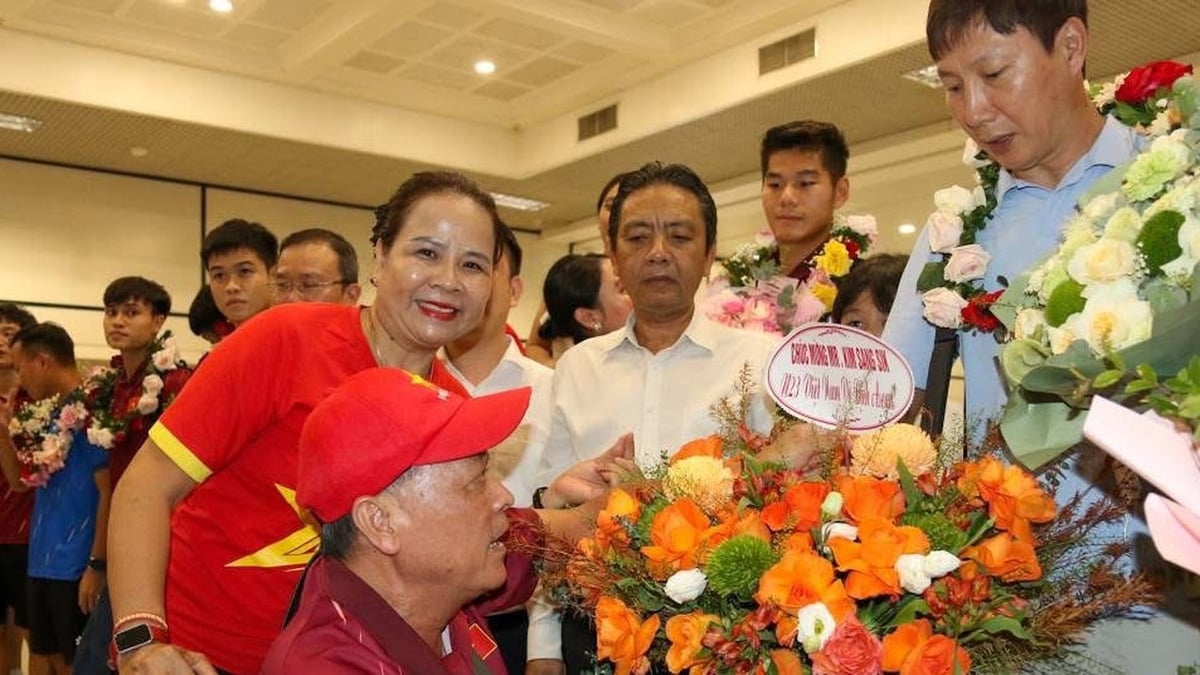



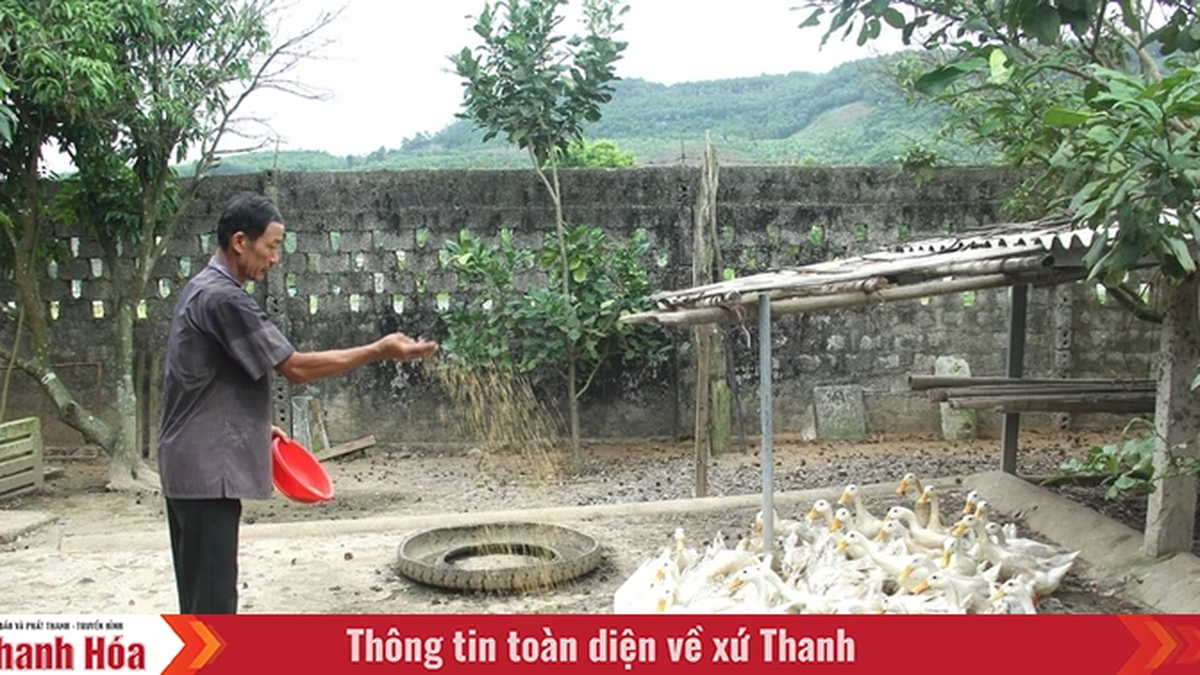














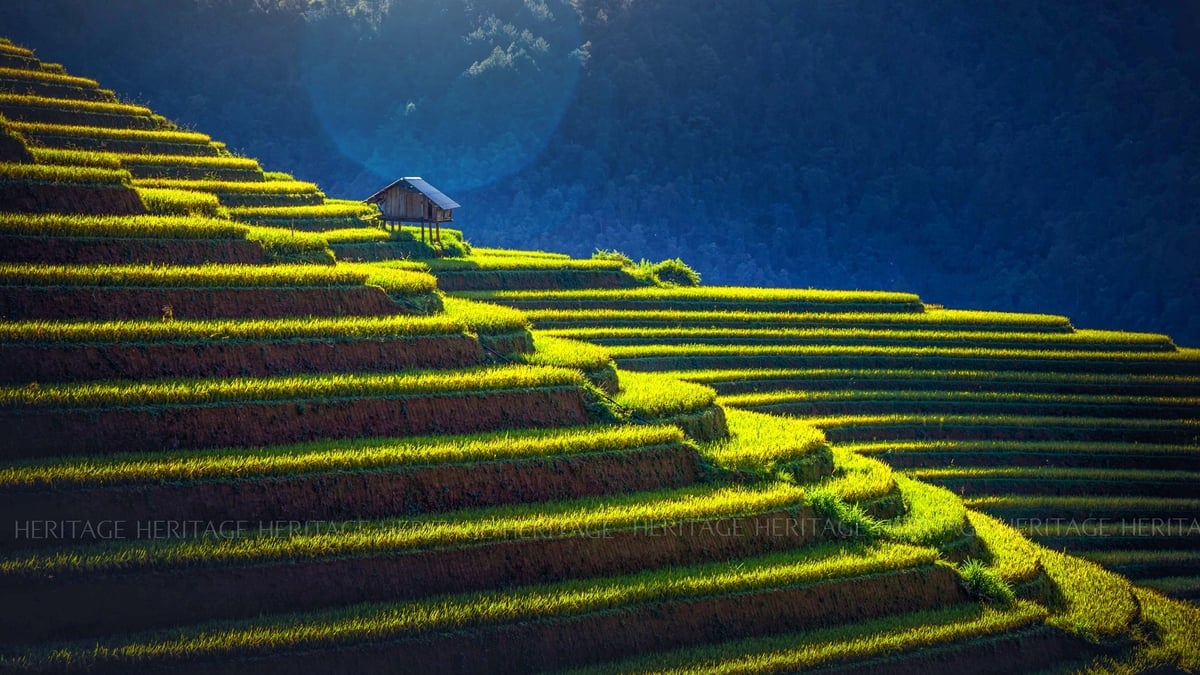

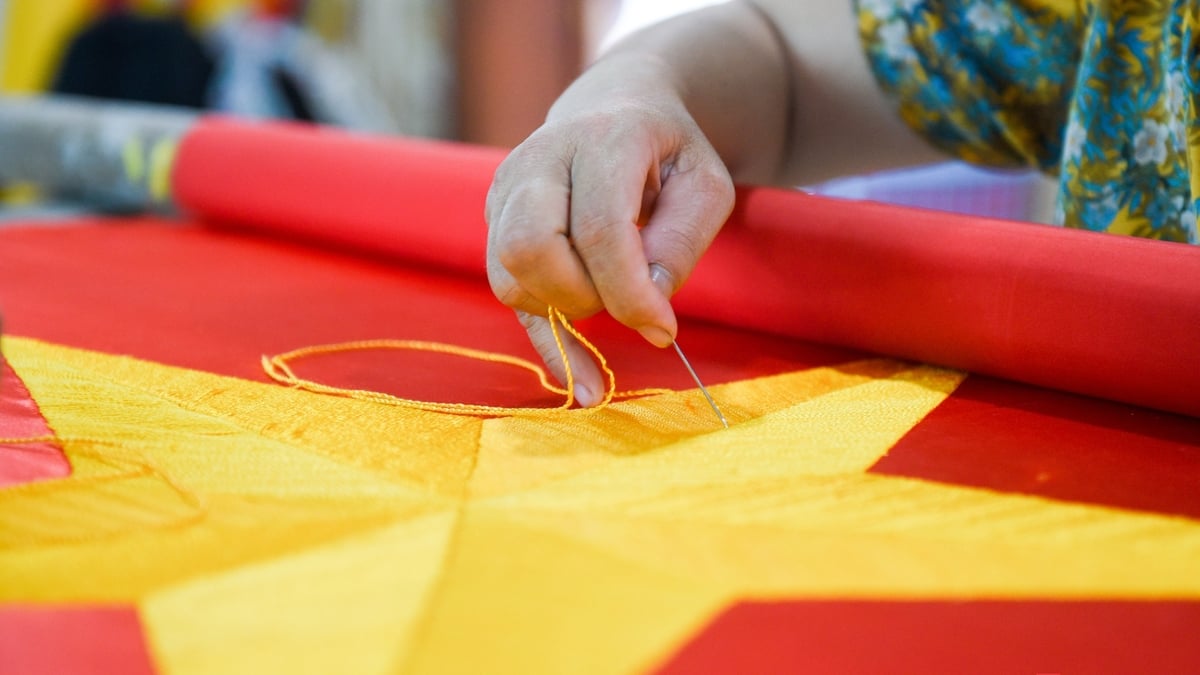




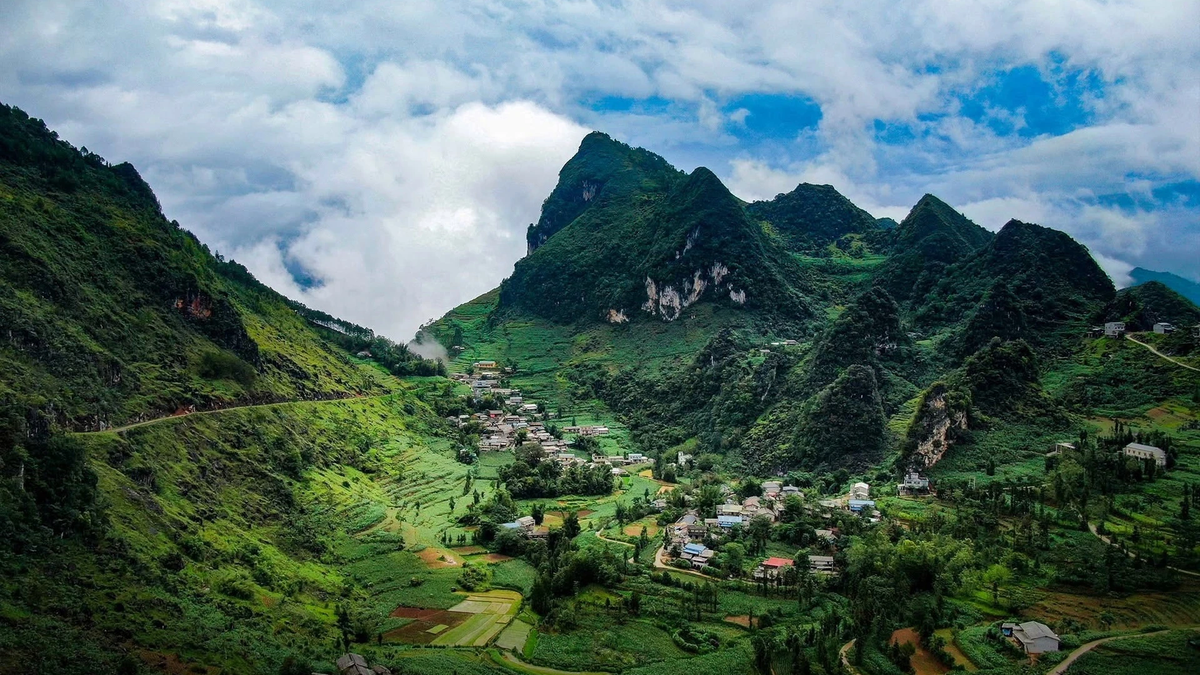

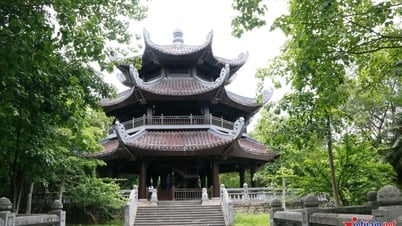

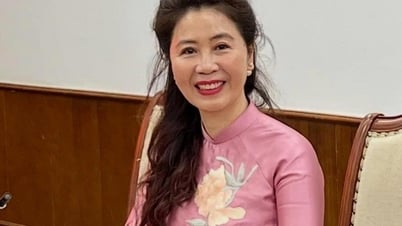

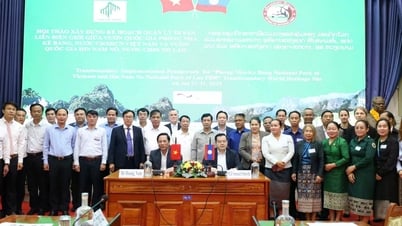

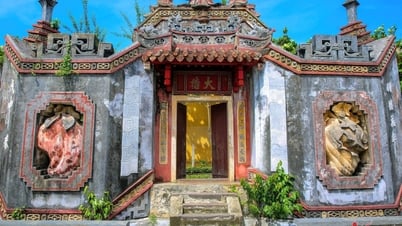


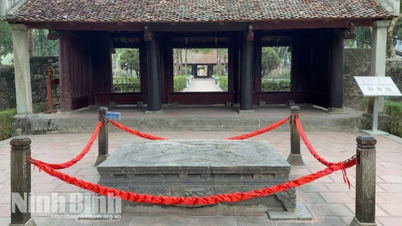




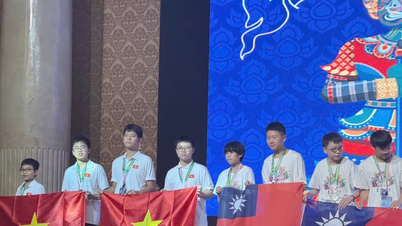




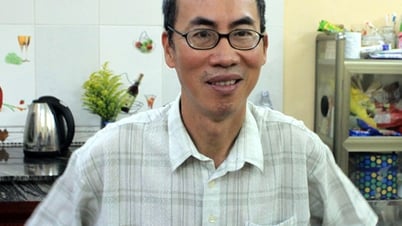




![[Maritime News] Container shipping faces overcapacity that will last until 2028](https://vphoto.vietnam.vn/thumb/402x226/vietnam/resource/IMAGE/2025/7/30/6d35cbc6b0f643fd97f8aa2e9bc87aea)


















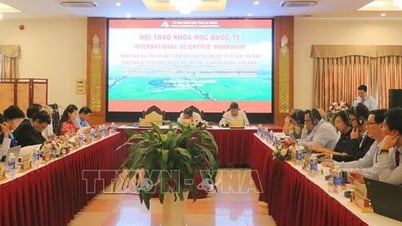

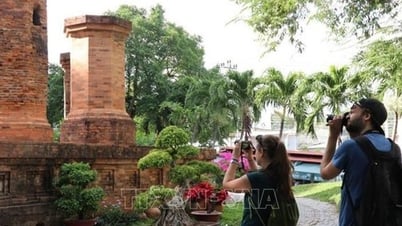










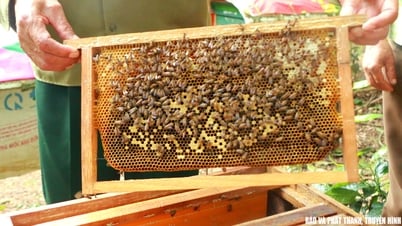

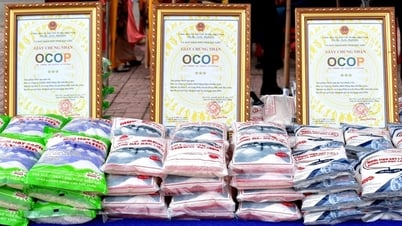
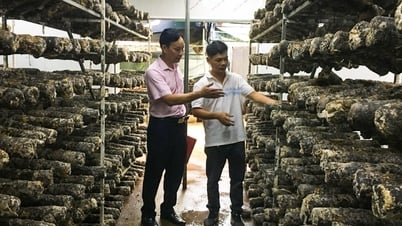

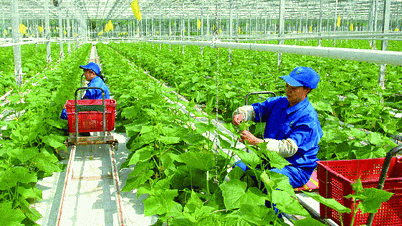





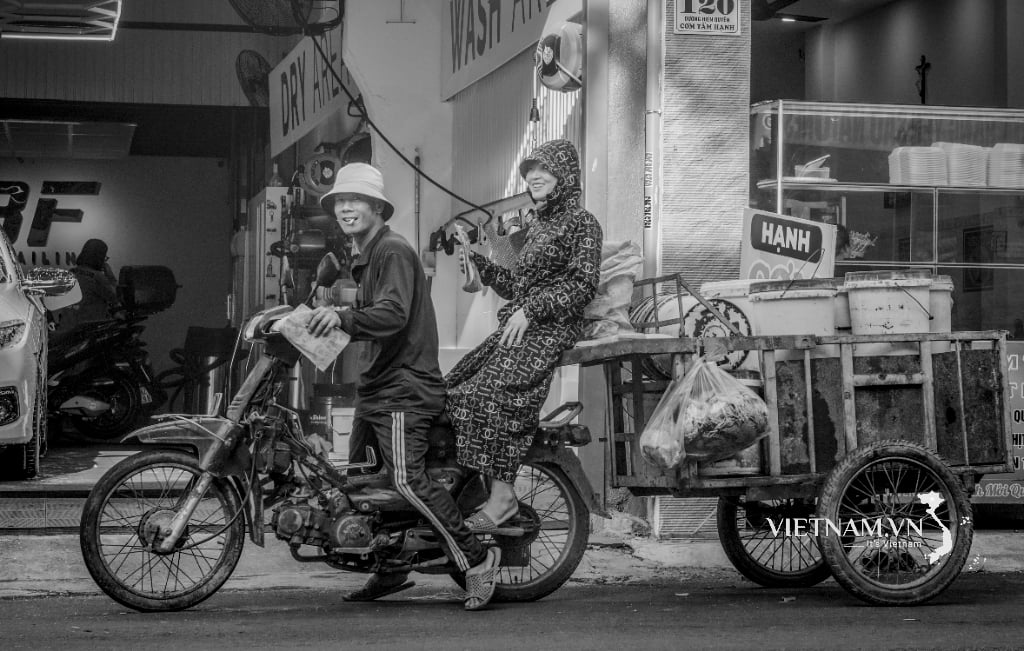
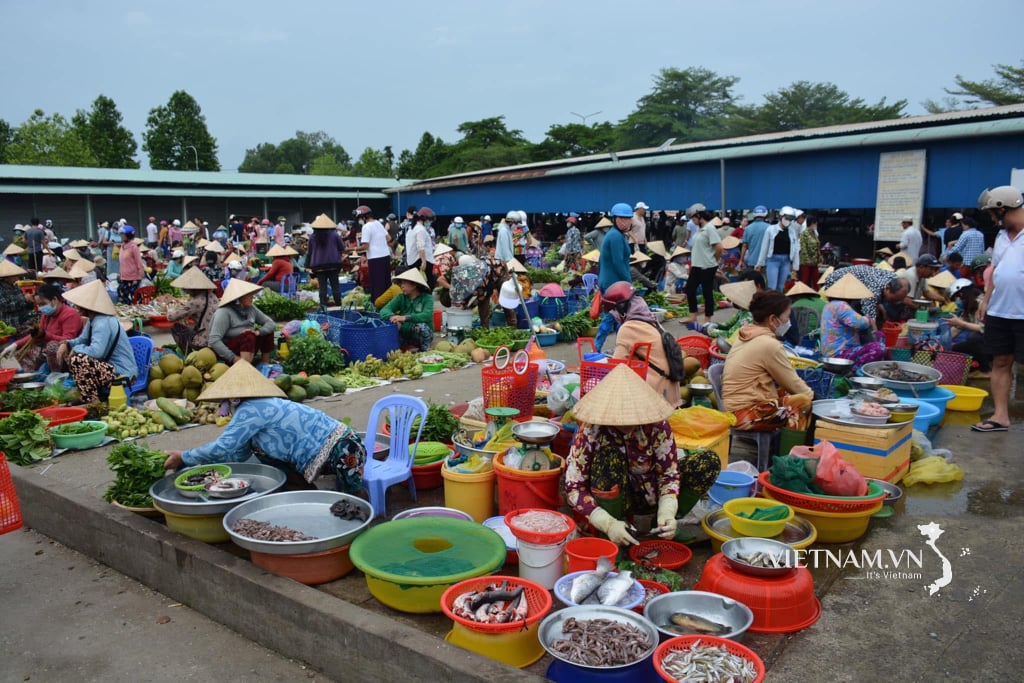

Comment (0)